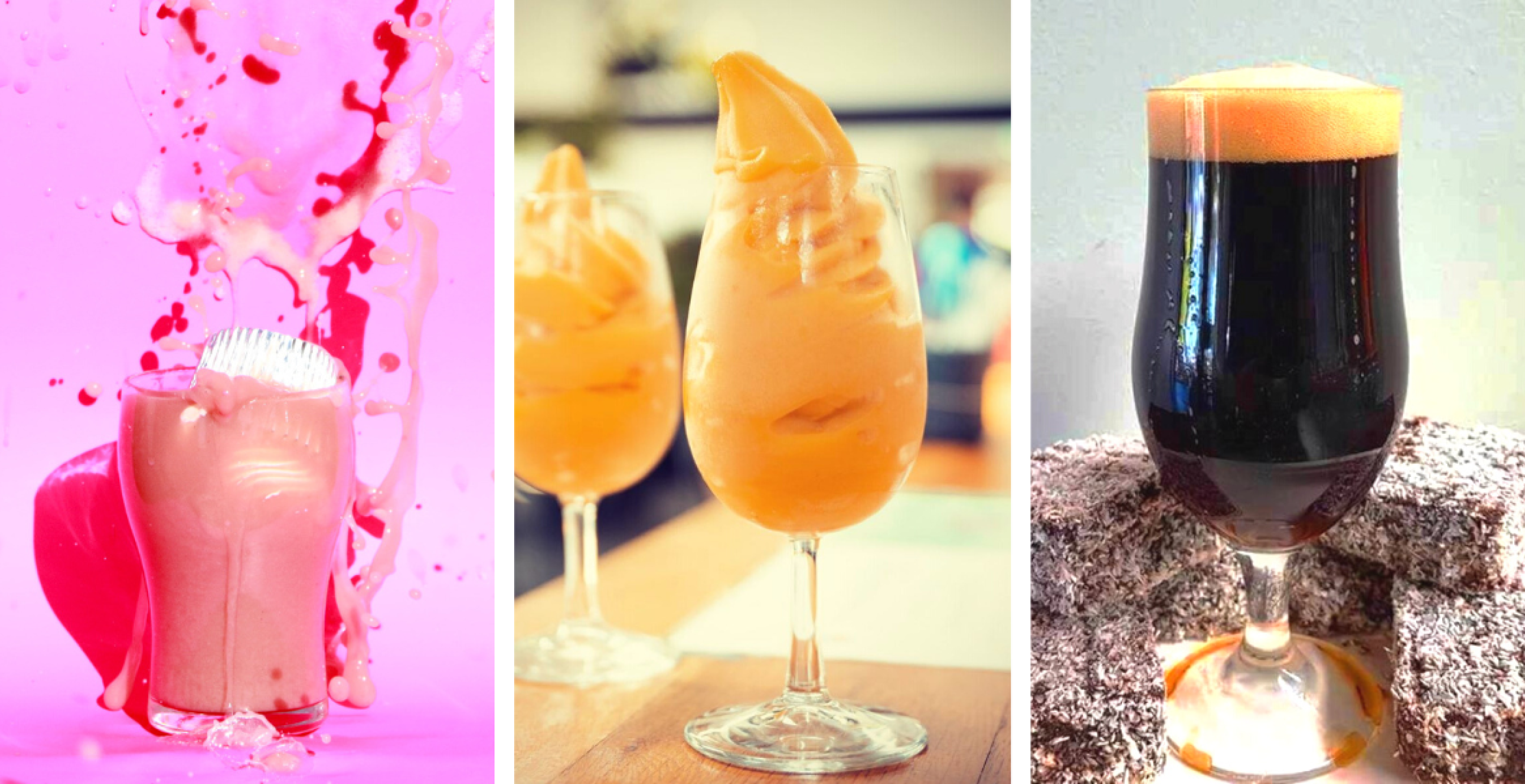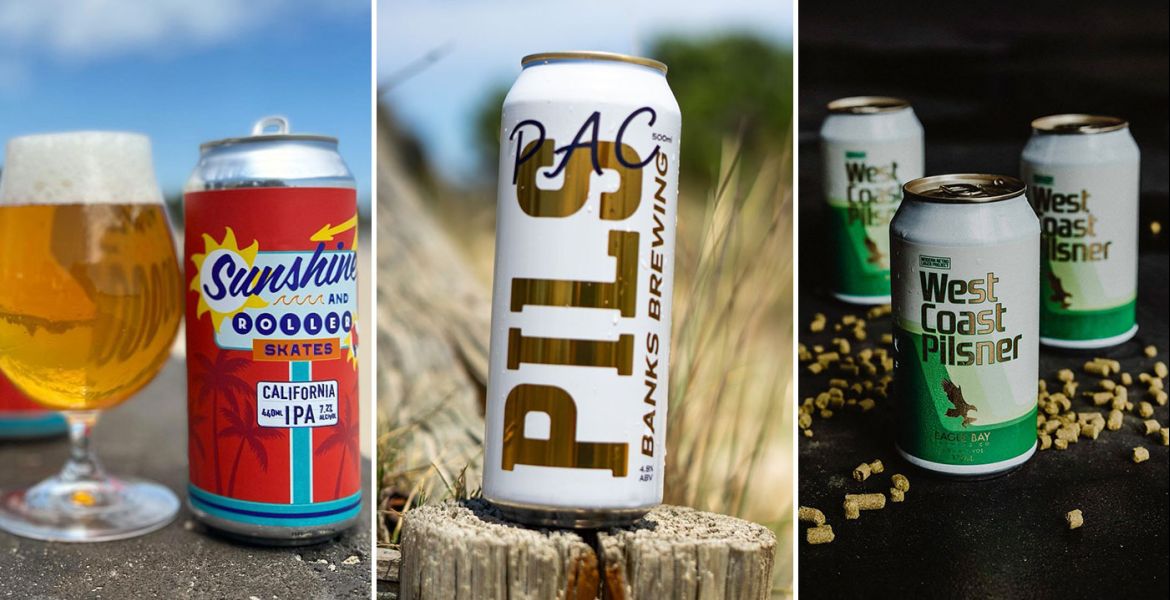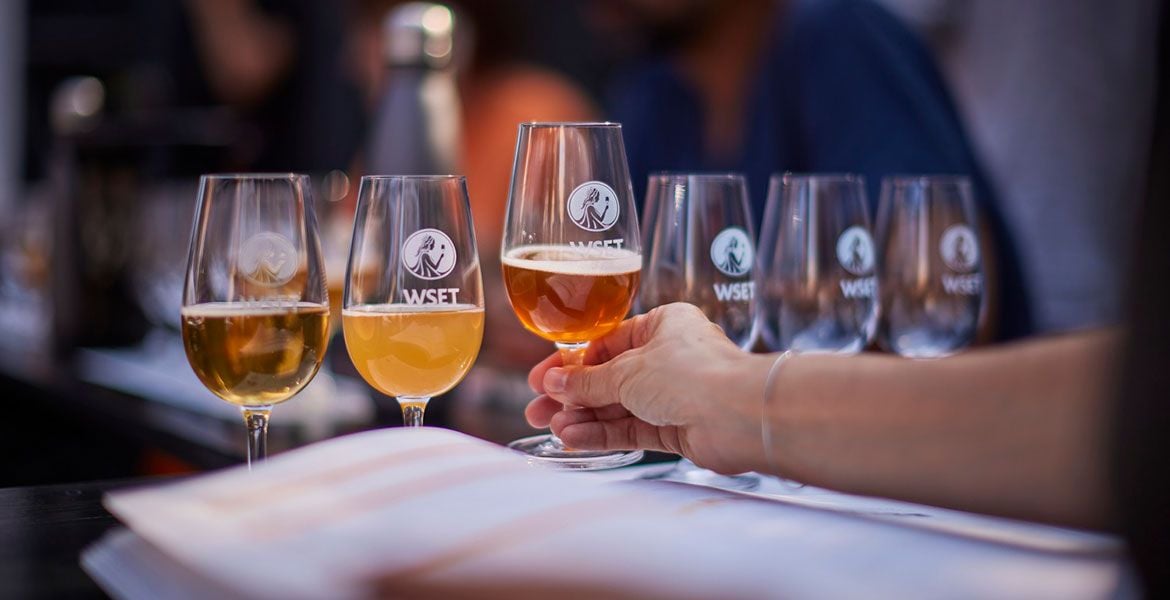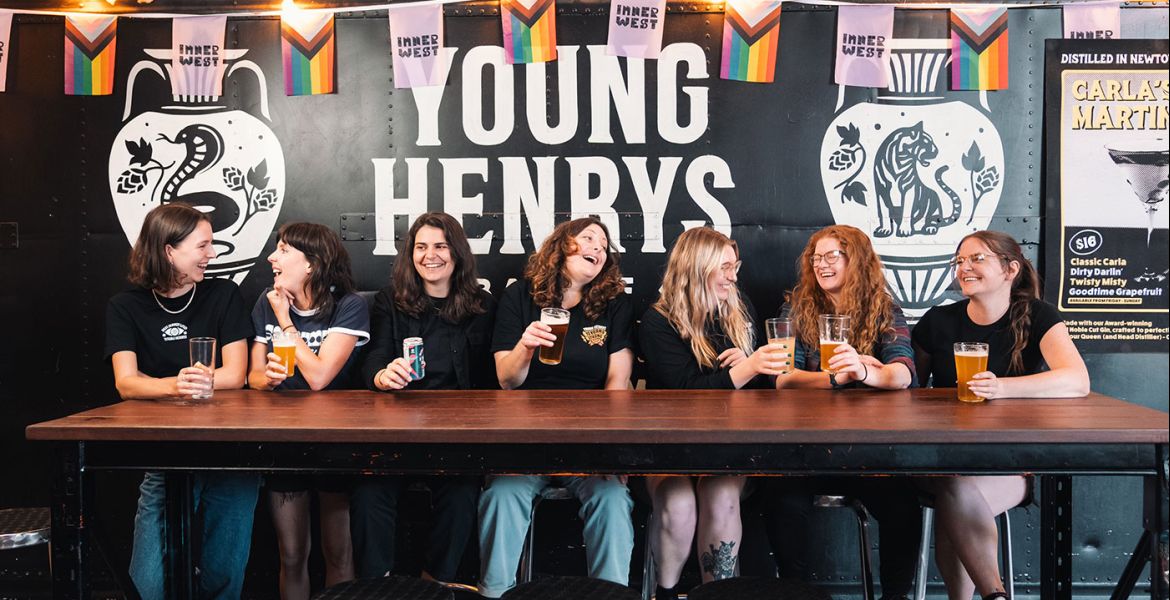Sweet, thick beers that taste like dessert used to be few and far between, but now it feels like they're everywhere. In part one of this two-parter, we’re looking at: what are pastry beers, where did they come from, and how are they made?
In part two, we’ll explore who’s drinking them and why they’re so appealing; what brewers are trying to achieve with pastry beers, and how they respond to people who think they shouldn’t exist; as well as why they’re so expensive and how many calories you might expect to find in one.
Pastry beers are like those models who walk down the runway in leopard print underwear with bright pink frills and peacocks on their heads. You can love them or you can hate them, but it’s hard to ignore them.
As such, it’s not surprising people have big opinions on these indulgent beers that drink like liquid desserts. “They’re for people who don’t like the taste of beer”; “Anyone can throw marshmallows and chocolate in a beer”; “If I want to drink something that tastes like a fruit smoothie, I’ll just drink a smoothie.” And my favourite: “Pastry beers aren’t beer.”
Except… they are beer. They’re made on a base of water, malt, hops and yeast. Sure, they contain things like lactose and marshmallows and buckets of blueberry purée, but they’re beer insofar as other beers with added ingredients are beer. Making a beer taste like pecan pie, mango lassi, or chocolate mud cake doesn’t suddenly stop it from being a beer.
Pastry beers are beer… but not as we know it.
Since it looks like these indulgent monsters are here to stay, it’s worth us getting to know them a little better. We’ll start by defining pastry beers (as a category, then each distinct style), then we'll explore where they came from and how they’re made.
What are pastry beers?
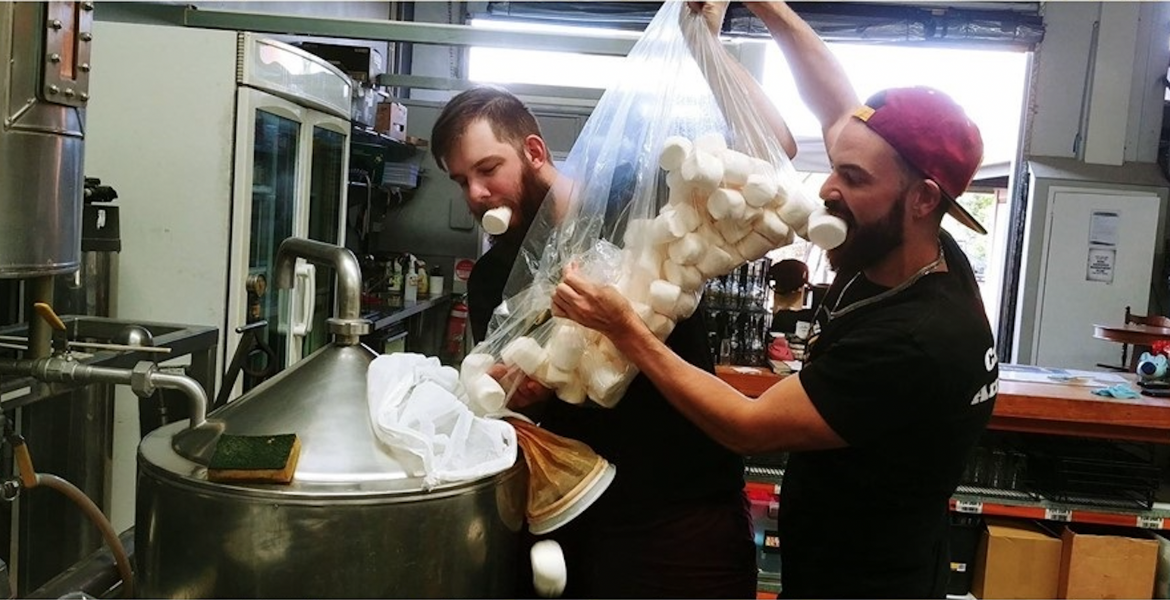
Pastry beers are typically beers that taste more like a dessert from a fancy restaurant than like a Czech pilsner. They’re the giant teddy bears of the beer world. They’re thicker than a Bond villain’s henchman and sweeter than your granny who still sends you money for your birthday each year.
When people refer to "pastry beers", they’re mostly referencing pastry stouts and pastry sours. But in this article I’m also including smoothie sours and thickshake/milkshake IPAs,* since they often creep in at the edges of the category. Am I biting off more than I can chew by including all of these kinds of beer in the same article? Probably. But I once ate a metre of pizza in one sitting, so I’m willing to give this a crack, too.
There’s no standardised definition for pastry beer (or for each of the above sub-styles), and brewers will each have their own idea of what it does and doesn’t mean. But I’d say there are five traits that generally hold these beers together.
1. Pastry beers contain the kind of ingredients that flavour pastries, desserts and other sweet treats.
This one’s non-negotiable: an imperial milk stout is not a pastry stout. But a vanilla, chocolate and peanut butter imperial stout? Or a blueberry, banana and maple syrup sour? A salted caramel and bourbon milkshake IPA? Now we’re talking.
There’s a huge pool of ingredients a brewer could draw from - things like cacao, coffee, all kinds of fruit, marshmallows, nuts, custard, coconut, biscuits and cinnamon are all fair game – and usually they’ll include more than one adjunct. These kinds of ingredients are sometimes used in non-pastry beers, but in pastry beers they’re used to the extreme.
2. Pastry beers taste like what’s on the label.
Pastry beers aren’t about subtlety but about overt, recognisable flavours. While the flavours must mesh well with the base beer, this isn’t about tasting a stout with a "hint" of the flavours on the label; it’s about getting those flavours smushed into your face. Drinkers want to be able to taste every advertised flavour in a pastry beer.
As Nick Calder-Scholes from One Drop puts it: “[There’s] a massive emphasis on the flavour that it is. For example, if it’s a chocolate and maple pastry stout, it needs to be thick, super chocolatey, lots of maple and the trimmings of a stout – bit of roast, bit of smoothness."
3. Pastry beers are thick and sweet.
A dry stout with the flavour of chocolate and coffee? That’s not what a mocha mud cake tastes like. And a light-bodied sour will never capture the vibe of lemon meringue cheesecake.
Pastry beers have a smooth fullness in the mouth due to residual sugars from a heavy malt bill and added lactose (which are also what bring the sweetness). Oats are often added to increase the body further, and the use of nitro can boost the creamy mouthfeel.
While pastry beers are "balanced" in the sense of having an intentional and well-constructed flavour profile… these are not supposed to be balanced beers in the normal sense. The sweetness and bitterness aren’t balanced; the sweet is supposed to dominate.
4. Pastry beers contain loads of lactose.**
This is so deeply ingrained into the foundations of the pastry category that it’s worth mentioning on its own. While lactose in beer isn’t new – our 2019 article on lactose explored the sugar’s introduction to beer over a century ago – it’s key to the flavour profile of pastry beers.
In other styles, lactose can be used in lower alcohol beers to add some body and balancing sweetness, or can be used sparingly to soften the edges of ingredients like roasted barley or hops; think of it like a thin strip of foam used to cover the corners of a picture frame. But in pastry stouts lactose is more like the foam that makes up a queen-sized mattress. It’s big and squidgy.
5. Pastry beers are high in alcohol.
This is probably the most contested point, as some brewers make lactose- and adjunct-laden beers at six percent ABV and call them pastry beers. But most brewers see higher alcohol as a key component.
Ross Kenrick from Bacchus, for example, makes plenty of lighter dessert-like beers… but doesn’t consider those ones pastry.
“A Bacchus pastry starts at 10 percent, and normally quite a bit bigger than that," he says. "That’s when we put the pastry stout moniker on it… When they’re down lower we’re not really referring to them as pastry stouts. At this stage.”
This probably began with the tendency for imperial stouts to be the base beer for pastry beers, but now it’s also true of pastry sours and IPAs – you can expect most pastry sours and IPAs to sit at seven percent ABV or above, and expect pastry stouts to be eight percent ABV or higher. Higher alcohol usually comes with the territory when you want to make a thick and sweet beer. Higher alcohol amplifies and helps balance flavours. Higher alcohol adds to the luxurious and indulgent feel of drinking these beers.
These five common traits group pastry beers together, and set them apart from their "normal" counterparts. But within the pastry camp, there are distinct styles: just as in the IPA category, there are important distinctions between hazy IPAs, black IPAs and triple West Coast IPAs.
Brendan Day from Cheeky Monkey is a strong advocate for giving respect to each distinct style of pastry beer.
“I’d certainly classify them as one category, but it’d be the same as trying to categorise all the million kinds of IPAs as one… To just lump them all into one big pastry group is really doing a disservice," he says.
“Much like with IPAs, there’s some overlap between pastry sours and smoothie sours. But I think the level of intent and what we’re trying to achieve out of these beers is different, [and different again] to what we’re trying to achieve with a pastry stout.”
So what are brewers trying to achieve with each of these styles?
A pastry stout seems to be the most straightforward, and the one more punters are familiar with: an imperial stout loaded with lactose and dessert-y adjuncts. But it’s not just a slapdash job, with the brewer throwing in everything but the kitchen sink. The best examples are made with careful intention.

Brendan says: “You’ve got to expect stout-based, good balance still no matter how much they push those adjuncts, and vanilla and lactose, then you’ll layer other flavours in there… they’re a really cohesive package and it makes sense. Nothing’s out of whack, They’re done really smart.”
The result is is something that’s as much dessert as it is beer, and as much an experience as a consumable. Dayvid Clark from Beermash refers to “density and flavours usually reminiscent of desserts or delicious serotonin-hitting treats, perfect for a night sinking into the couch.”
Pastry sours and smoothie sours are related, but not the same as each other.
While most sour beers tend to be dry and light-bodied, which accentuates their acidity, pastry sours are thick and sweet with lactose and residual sugars from malt; the acidity is there to play a supporting role. This acts as a pedestal to lift up the adjuncts: usually vanilla and fruit. The fruit in these beers ends up tasting like baked fruit or coulis, and the resulting beer can resemble something like a fruit danish or a cheesecake.
“These are probably the most interesting and inviting beers for a non-traditional beer drinker as they're so far removed from what we know as normal, bitter classic beer styles,” Dayvid says.
Smoothie sours are juuuuust on the edge of the pastry beer category. The goal with these isn’t so much to resemble a bakehouse dessert but – you guessed it – something more like a fruit smoothie. So while pastry sours are thick and sweet with lactose and have fruit added pre-fermentation for flavour (while the fruit sugars are fermented out), smoothie sours rely on masses of unfermented fruit purée for their flavour, sugars, texture and appearance.
Nick says: “Smoothie sours have been a big mix of different fruits, and restrained on the lactose, and you’re having those fruits added post-fermentation so you are tasting mango purée and things like that, creating a blended smoothie-esque flavour.”
While brewers used to do all they could to add fruit character to sour beers without pectin cloudying the beer’s appearance or adding texture, the opposite is true of smoothie sours. People want complete opacity, fruit chunks oozing over the side of the glass, and residue on the inside of the glass.
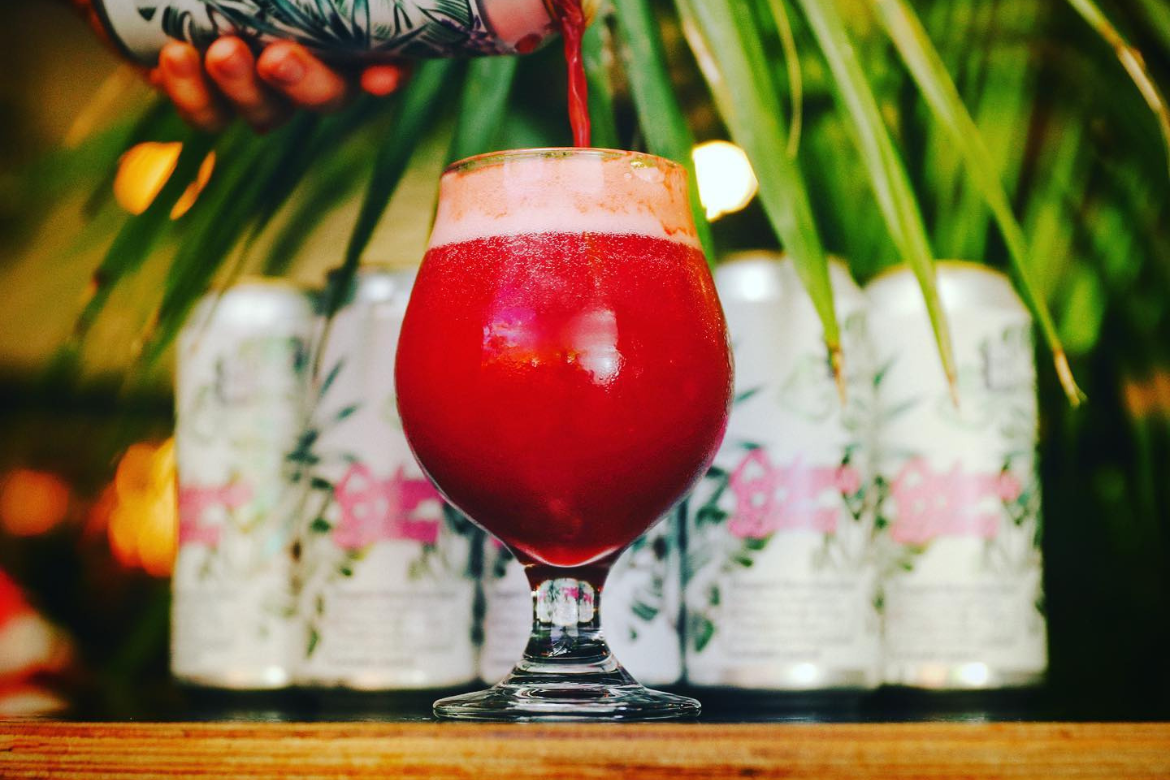
Milkshake IPA appeared as a term several years ago for hazy IPAs with added lactose, vanilla and other adjuncts (though these adjuncts were a light touch by today’s pastry beer standards). Their evolution into thickshake IPAs was inevitable in a market driven by ever-escalating pastrification.
The base is a hazy IPA – tropical hops, hugely aromatic, low bitterness, oats for pillowy mouthfeel, hazy as anything – with a hop profile that’s still apparent in the finished product. Lactose and adjuncts then throw in their milkshakey magic: sometimes it’s as simple as a mango milkshake IPA; sometimes it’s more unexpected, such as 3 Ravens’ Shake variations of salted caramel, coffee & blueberry, and choc mint milkshake IPA; and then there’s something like One Drop’s Double Vanilla Custard Pancake Imperial Nitro Thickshake IPA and all bets are off.
While pastry stouts can reach chocolate mousse levels of thickness, milkshake and thickshake IPAs tend to aim for creamy rather than crazy, which is perhaps one of the reasons the term "pastry IPA" hasn’t come into common usage. But when I prodded Nick with the question: “Why aren’t we calling them pastry IPAs?” we had a short conversation about naming conventions before he concluded: “I’d say our vanilla custard thickshake is probably a pastry IPA. But it seems to be the industry’s calling them thickshakes instead… and I don’t know why that is.”
(For the rest of our conversation, Nick unswervingly referred to them as pastry IPAs. So I’m calling it now: in 2023, we’ll be seeing more beers labelled "pastry IPA." Watch this space...)
Where did they come from?
When it comes to the origin of the term "pastry stout", you can thank Alex Kidd of Don’t Drink Beer (this guy, not this guy). He was using it as far back as 2014 in an online beer geek forum called Talk Beer as a satirical insult of sweet and sticky stouts full of adjuncts. But his jibe was soon taken up by others and used non-satirically – "pastry stout" was the perfect way to describe some of these stouts that tasted like pastries (or cakes, or pies, or other desserts).
As for the beers themselves, while they found a nurturing environment in the USA brewing scene by 2014, it seems Scandinavia was the petri dish where these over-the-top beers first bloomed into being.
In Denmark, Mikkeller’s Mikkel Bjergsø made Beer Geek Dessert in 2011, which boasted flavours of “chocolate, vanilla, roasted caramel and cake” with “sweet and lasting flavour” and “creamy succulence” – descriptors that were outlandish at the time, but clearly starting to develop the language of pastry beer.
Meanwhile, Mikkel’s twin brother Jeppe was playing in a similar space. Evil Twin Brewing’s Biscotti Break in 2011 would be tame by today’s standards, but it began a journey that led to Imperial Doughnut Break in 2013 and Maple Bourbon Barrel-Aged Imperial Mexican Biscotti Toasted Coconut Cake Break in 2018.
Henok Fentie of Sweden’s Omnipollo had ambitions of being a pastry chef before getting into beer, and those ambitions (and love of sweet treats) squeezed their way into his brewing. Fentie has been one of the most influential brewers of dessert-style beers over the last decade, from the time he lugged a suitcase of marshmallows to a collaboration brew with Brouwerij De Molen in 2013 (and had to persuade De Molen that marshmallows in stout weren't an insane move), through his ice cream series made in collaboration with Buxton from 2016 onwards, and how ever many tens (hundreds?) of creative sweet beers that have come from Omnipollo since.
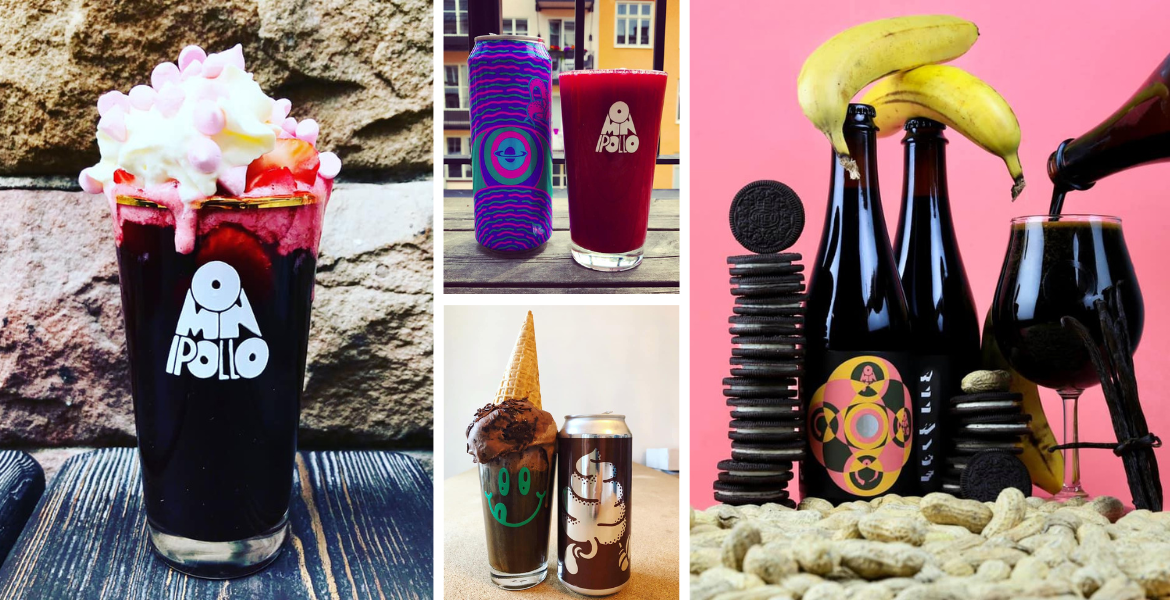
The origin of pastry sours is a little harder to track, since adding fruit to sour beers has seen a long and gradual increase, and brewers have added lactose in small amounts at various times to back-sweeten sours that lacked balance. But Omnipollo’s Bianca series of lassi-inspired goses with lactose and fruit must have been some of the first to push in the direction of "pastry sour" in 2015, even if some of them were restrained in their alcohol content.
The smoothie category grew even more slowly. As consumers kept crying for more fruit in their sour beers, it was only a matter of time before the balance of fruit to sour beer reached shocking proportions; you can now get smoothie sours made up of 40 percent fruit purée. They clog beer taps and almost require a spoon to drink them.
Social media was one of the main drivers of smoothie sours; 2019 was the year these beers made Instagram lose its collective mind. American breweries (largely from the east coast) kept one-upping each other with a campaign of shock-and-awe by making beers that looked absolutely unreal, like someone had filled a glass with coloured paint.
As for milkshake IPAs, the birth of this genre is largely credited to Jean Broillet IV of Tired Hands Brewing in Philadelphia. But it must be said that Jean’s first foray into adding lactose into a hazy IPA (along with wheat flour and apples) was in a collaboration in 2015 with none other than Omnipollo, who had put lactose, vanilla and fruit into an IPA the previous year to make Magic #411. Still, the Tired Hands x Omnipollo milkshake IPA was a real watershed moment; it was used as a base beer to be conditioned on vanilla and different fruits for multiple variations. Jean then continued to play with milkshake IPAs at Tired Hands over the ensuing months and years, and in time other brewers looking on decided to take up the style as well.
While the Australian brewing scene was later to the party in terms of following these trends (what’s new?), we did have a few early entrants. Bacchus Brewing’s Sex, Drugs & Rocky Road – first brewed for GABS 2014, but still rebrewed to this day – would be a kind of proto-pastry-beer containing lactose, peanuts, chocolate, cherries, marshmallow and Turkish delight. Moon Dog’s 2015 release Splice of Heaven was likely Australia’s first milkshake IPA, using lactose, vanilla, pineapple, lime and fruity hops to mimic Splice ice creams (vanilla ice cream centre with a pine-lime fruit ice outer layer). And, in 2017, Sailors Grave took inspiration from not one but two desserts with their Peach Melba Pavlova Cream Sour.
How do brewers make them?

If you’ve ever thought brewing these kinds of beers is lazy – just a case of making a beer then throwing a lot of extra ingredients into it – you’re kidding yourself.
With most beer styles, brewers are standing on the knowledge and experience of many who have gone before them, and can turn to their peers for advice. They’re also looking to their own bank of experience of using certain ingredients and processes for years, and knowing how everything will interact.
But with pastry beers, it’s the great unknown. Brewers are often making beers different to anything they’ve made before with ingredients they’ve never used before - or at least never used in such amounts and combinations. Brewers of pastry beers are like the characters in those Marvel movies who pick up unfamiliar pieces of alien tech: “Is this going to be the weapon that wins the war, or turns me to goo?”
Half the time they need to re-invent processes as they go just to deal with the problems that arise in brewing.
“We are learning new processes and techniques that can make their way into our other beers,” says Brendan.
“Ryan Nobbs, our head of brewing operations, is a trained master brewer. He went to Germany and studied at Siebel, and when he first came here he just wanted to do like triple-filtered pils and all these beautifully technical and brilliant styles, but he’s really started having fun with [pastry] beers. I really credit him and his knowledge and skill with being the reason that we’ve been able to start to make a name for ourselves in this style. It’s not just shit thrown at a tank and hope for the best. It’s done with some real science and tech.
“As much as we know. And what we don’t know, we figure out!”
I asked Nick from One Drop to walk me through the process he’d take in making a pastry beer.
“First you need to overload your mash tun to the point of pretty much overflowing. We’re talking huge base, with plenty of grains that tend to be quite protein heavy: oats, wheat, spelt. And every form of those, torrefied as well as malted, and crystal versions, like golden naked oats. You’ve got this big, protein-heavy base. You mash it in a bit higher than usual, so your finishing gravity is high.
“You come over to the kettle and you’re loading that puppy up with all the goodies. For us, we’ll use brown sugar, golden syrup, maple syrup, lactose, caster sugar, icing sugar, marshmallows. We’ve done cocoa nibs, cocoa husks, cocoa mass. We’ve gone to literally a bakery supplier and got 25kg bags of brownie mixture. This is the chance to ‘cook’ the pastry, or the filling of the pastry, I guess. The filling of the beer. A lot of lactose in sours, a lot of other adjuncts for stouts, caramel, those kind of things.
“Then you’re going to ferment it with a very hearty yeast – something that can handle high alcohol, that has high attenuation. Because it’s just so thick, right? Your hydrostatic pressure and viscosity… it’s a really full-on environment for yeast. Yeast get really fat really quick, so if there’s too much simple sugar it’s pretty hard for fermentation to finish. We’ll put in oxygen day one, two, maybe even three, and monitor our fermentation like a hawk.
“And then depending on what you’re doing, we’ll add fruit then, for a pastry sour. Once the yeast is over that initial period, we’ll hit it with a bit of fruit so it’s got enough ferment to get through the rest.
“Where we would be adding the fruit for the sours, for the stouts we’d be adding cocoa nibs, or vanilla, or anything else we can rest the beer on, that may not dissolve as good, or be as good, in the kettle.
“Then we’ll chill, and spin, and depending on what we’re making we’ll add some more [adjuncts] before canning.
“Once you put it in can, it’s usually hard to carbonate ‘cause it’s so thick! I always prefer lower carbonation… that just adds to a bit more perceived thickness.”
Pastry beers may have flavours that remind us of the simple pleasures in life, but there’s nothing simple about making them. The process comes with plenty of challenges: from getting enough sugar out of the grain (or enough sugar in general) for the yeast to eat, to keeping the yeast happy during fermentation; from discovering for the first time how peanut butter or brownie mix or cupcakes work in a beer, or learning on the fly how ingredients like blueberry and banana and coffee and maple syrup interact with each other when combined; from the frustration of faltering supply chains to the ever-looming threat of sweet treats refermenting in the can and going off like a hand grenade…
But none of these challenges seem to stop people from making them. Brewers are gluttons for punishment, and punters are gluttons for pastry beers.
In part two of our deep dive into pastry stouts, we’ll look at questions such as: why do these beers have such a strong appeal? Who’s drinking them? What are brewers trying to achieve with pastry beers: aiming as far from normal beer as possible, or as close to a cake in a can as possible? How would brewers respond to the haters who say, “Pastry beers are for people who don’t like the taste of beer”? And what’s the cost of these beers – on the wallet, and on the waistline?
* The word "thicc" is also being thrown around in relation to some of these lactose-laden beers, but please let me avoid using this word until I absolutely have to.
** There are brewers toying with ways to make pastry beers without lactose, but lactose is far and away the most common way to make these beers thick and sweet.


